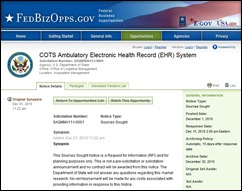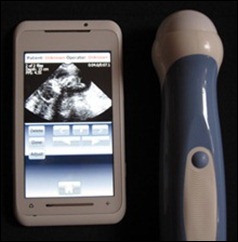Intelligent Healthcare Information Integration 12/9/10
EMR Hunting: 20 Questions (well…5, plus)
Q) Why is hunting for an EMR like looking for a new smart phone?
A) Because there are a ton of them from which to choose, most of them look and feel pretty much the same, they can all do a lot of the basics, there are some pretty cool features even in some of the less-developed ones, and even the best ones don’t do everything you might want.
—————-
Q) Why is vendor EMR enhancement sometimes akin to moving from a pig pen to a mud puddle?
A) Because when a vendor gives their old users a new feature or a slightly better interface, the users will rave and crow about how cool the new feature(s) is/are, not realizing their lot in life has only minimally improved.
—————-
Q) Why aren’t all vendors offering free online demo tool access where users can “test drive” an EMR?
A) Not sure. I only know that if I’m buying something to “drive” for the foreseeable future which may make or break my bottom line, I sure as heck am not going to pony up after a spin around the block with the salesperson doing the driving. Plus, I’m much more prone to appreciate a vendor who provides such access.
—————-
Q) What makes for a great EMR demo experience?
A) Vendor reps who really know their product, who don’t assume that they know more than their customer, who take the time to try to deliver a personalized experience and not just a rote spiel, and who TRULY understand the value of time to a busy physician.
—————-
Q) What can providers do to enhance their EMR product compatibility?
A) Look for a system “look and feel” that suits you, yes, but also look for a corporate philosophy and history that is compatible with your values. Glitz and sham abound; don’t be blinded by pseudo-science, salesmanship, or “the show.”
—————-
Q) What about those products mentioned in the post of November 30th?
A) Not forgotten. (And by the way, I really appreciate the Comments and emails I’ve received suggesting products and features I may not mention or even be aware of – thanks, and please keep ‘em coming!)
SRSsoft’s Hybrid EMR – One of the things I like best about SRSsoft isn’t just their new “app store” which allows users to add new parts and pieces in the user-friendly fashion of iPhones and Droids (which I truly, dearly love!) No, perhaps the best thing about them is straight-shooter Evan Steele, company CEO and all-round good guy. Evan actually took the time to personally show me around the SRSsoft block and describe their tool, their new app store, and their pending new version features (very cool!) What really makes him unique in my book, though, is his honest, no BS approach. Case in point: Evan has been rather outspoken in his opinion of Meaningful Use certification and its lack of value to specialists (one of his special foci.) He has maintained a clear vision about wanting to provide physician-friendly tools which are “workflow-driven.” However, as this ever-evolving process has unfolded, he has re-evaluated their corporate stance and will now get on about obtaining an ONC-certified diploma. The value to his clients of such has changed and he is open and frank about seeing the need for providing this and changing his approach. As he gave me a explanation of his changed views, I sensed no sales guy schmooze, just a plain-spoken “I’ve reconsidered.” I like his lack of guile and straight up manner.
Medicity’s iNexx – Well, I’m not sure what to say now about Medicity and iNexx. I have gotten to know several of their corporate bigwigs and really enjoy and respect them. I like their primary product a lot and am very intrigued by their approach with the open source, app-able iNexx (though it’s really still in alpha and not yet ready for prime time.) The recently announced buyout by Aetna is something that makes the physician in me cringe. Nothing particularly personal to Aetna, but after years of aggravating experience after aggravating experience, my overall insurance company Gestalt is, well, probably pretty commonplace amongst providers and not all that wonderful. I do try to maintain the bigger picture view I espouse, but whether it’s Aetna or UnitedHealth Group or MomsAndPops Hometown Insurance, most physicians don’t really feel too good about having more insco involvement in between their patients and them. It’s a “once bitten, twice shy” thing. I read on HIStalk that Medicity would stay as a separate biz unit “under the company’s current management.” I hope so. I really like those folks – and their tools.
So many products, so little blog space. Next up: Fun folks (expanded,) excitement, a true helpmate, the power of views, plus.
To be continued, from the trenches…
“Dreams are today’s answers to tomorrow’s questions.” – Edgar Cayce

Dr. Gregg Alexander, a grunt in the trenches pediatrician, directs the “Pediatric Office of the Future” exhibit for the American Academy of Pediatrics and is a member of the Professional Advisory Council for ModernMedicine.com. More of his blather…er, writings…can be found at his blog, practice web site or directly from doc@madisonpediatric.com.















The article about Pediatric Associates in CA has a nugget with a potentially outsized impact: the implication that VFC vaccines…